Three Tiers of Belize
rom the top of El Castillo, the tallest Mayan ruin at Xunantunich and second-largest man-made structure in Belize, I could see forever, and it took my breath away. Our guide called out to my husband, who was waiting in the plaza far below with a voice that bounced and echoed off the other buildings around us. We had clambered up the ruin, using hands and knees to scale its steep steps. It was easy to see how a ruler could employ the architecture to assert strength and power over as many as 10,000 people who lived in and around this ancient city.
We had driven two hours through the jungle from Placencia along winding Hummingbird Highway to get to Xunantunich, where the only way onto the property was across the serene Mopan River on a hand-cranked ferry. It was a quiet way to approach the ancient ruin and a gentle reminder that water is as important to life now as it was two millennia ago. Another half-mile drive up the mountain led us to a visitors center where a helpful map illustrated the complex ruin.
Impressive enough was the gatehouse, the first building we passed, but our guide kept us moving with promises of more yet to come, and he was right. After climbing through the jungle on steps re-created in the original Mayan style, we walked out into the sunshine among massive buildings, plazas and stelae. Each ruin was in a different state of repair, with the crown jewel being the 130-foot-tall Castillo. On two sides of the ruin are reconstructed friezes that probably once wrapped around the entire building and depict gods and other important symbols.
Not all Mayan ruins allow climbing, and it is sometimes treacherous to balance along the narrow steps, but the effort is worth the opportunity to see what was once a view reserved for the highest echelons of society. Only a half-mile from Guatemala, it provides an expansive view of two countries that were both in the realm of this huge regional capital.
Once down from the breathtaking heights of El Castillo, we wandered through a ball court overseen by a spider monkey who rustled in the trees above us and learned that a 12-pound rubber ball had been used in the games played there. We saw an excavated tomb near the site's main residence with a courtyard of its own and rooms we could explore. We could imagine what it would have been like 2,000 years ago with brightly colored walls, thatched roofs and a busy population going about their daily lives.
Continuing our journey through the ancient Mayan world, we left Xunantunich and drove back down the Hummingbird Highway to St. Herman's Cave in Blue Hole National Park. We arrived near sunset, long after any crowds had gone, and thus secured a private guide for our adventure.
He walked us through the jungle and explained how the cave had been opened to the public in the 1960s, but in ancient Mayan times it had been used as a place of ceremony and reverence. Pottery, spears and torches found within indicate the cave's early use as a place to gather zuh uy ha, or virgin water, from dripping stalactites for ritual uses.
We donned helmets and headlamps and carried innertubes as we climbed down steep steps into the mouth of this jungle cave that is hidden by lush foliage. Once inside, the cool air and hush enveloped us. We walked a worn path along a quietly flowing river until our guide instructed us to enter the water and settle onto our innertubes. While we held onto each other, he pulled us deeper into the dark heart of the cave, far below the bright soaring heights we had experienced only hours before.
That was when we turned off our lights. In the velvet blackness of that cave, we floated in quiet awe and imagined the reverence of the ancients who once gathered in this space. Our guide let go of us, and we floated in silence, pushing off cave walls from time to time and listening to the gentle laps of water against our tubes. Eventually he asked us to turn on our head lamps and observe the sparkling rocks overhead and interesting formations around us. It was an almost spiritual experience.
Having been to the highest point in Belize and then into the deepest depths of it, we needed one more activity to complete the adventure -- something in the middle. My husband and I signed up for a sunrise kayak through the mangrove swamp to explore Belize at sea level. We met our guide just after sunrise to load into seafaring kayaks and head out into the Placencia Lagoon. Passing a tiny island in the channel, we saw a spiny iguana hiding in plain sight along the bristly trunk of a palm tree.
Farther along we spotted pelicans, anhingas and cormorants flying overhead as we paddled in and among a cathedral of mangrove branches and their twisted roots. Since we were in a rain forest, it was no surprise when a torrent gushed down upon us, and we quickly donned rain jackets and hats that had no hope of keeping us dry in the deluge.
We dipped back into the mangroves, where thick leaves softened the raindrops, and we listened to real birds and splashes that would have only been soundtracks on meditation apps back home. It seemed as if Chaac, the Mayan god of rain, was blessing us as we completed our trifecta tour of the highest highs, deepest caves and glorious mangrove cathedrals of Belize.
----
WHEN YOU GO
Xunantunich has excellent guides waiting by the ferry to help visitors digest the ancient site: www.themayanruinswebsite.com/xunantunich.html
St. Herman's Cave and the Inland Blue Hole: travelbelize.org/attraction/st-hermans-blue-hole-national-park
Naia Resort is a tropical paradise, an excellent place to stay and helpful in securing tours to see ruins, caves and kayaks: naiaresortandspa.com
========
Lesley Frederikson is a freelance writer. To read features by other Creators Syndicate writers and cartoonists, visit the Creators Syndicate website at www.creators.com.
Copyright 2025 Creators Syndicate, Inc.
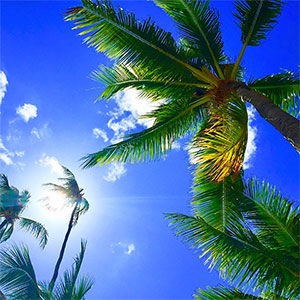
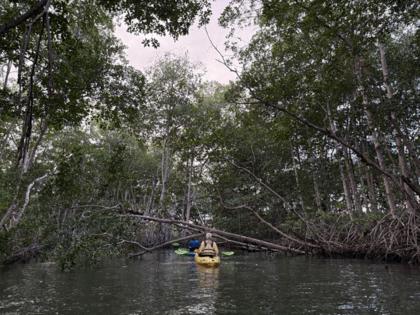
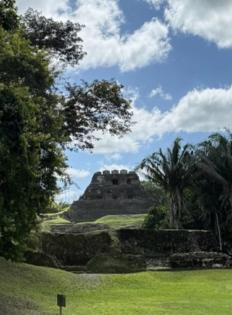
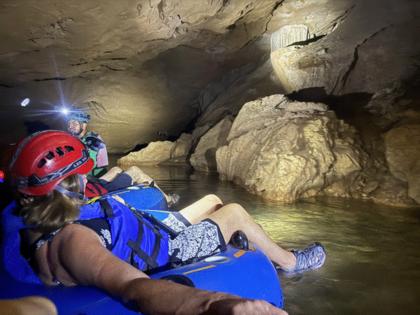





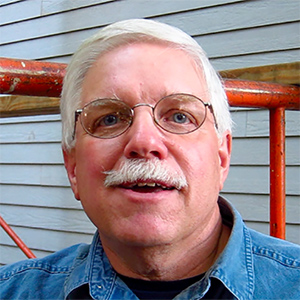
















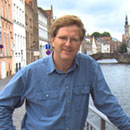








Comments